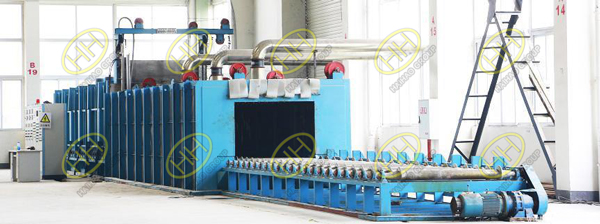Cooling method of inner and outer walls of forgings
In order to heat and cool large vessel forgings evenly and effectively, the manufacturer should have large heat treatment furnace and quenching water tank with sufficient capacity. The flow state of quenching water plays an important role in the heat exchange on the forging surface, which is more significant than the volume and circulating water volume of the water tank. Therefore, the water pipe sprayed against the forging is set near the inner wall and the center of the water tank to strengthen the cooling of the inner and outer walls of the forging.
1.One of the important characteristics of forging quenching is that the inner and outer walls are cooled at the same time. Due to the different flow state of the medium inside and outside the forging, the heat transfer of the inner wall is lower than that of the outer wall. In addition, due to the fan-shaped characteristics of the cross section of the forging, the ratio of the unit volume of the inner wall to the area of the heat exchange surface is always larger than that of the outer wall. Even if the heat transfer coefficient of the inner wall is close to that of the outer wall, the cooling of the inner wall is slower than that of the outer.

Quenching and high temperature tempering of steel tubes
2.When the forging size is fixed, the cooling process of forging quenching mainly depends on the temperature and flow state of water.
3.The flow state of water includes flow rate and flow direction. The cooling strength of forgings during quenching is the reflection of heat conduction and convective heat transfer between forging surface and water.
4.The quenching and cooling of forging is the result of the comprehensive action of surface heat transfer and internal heat conduction. The cooling speed of surface can be accelerated by improving the cooling strength of surface.
5.The wall thickness has a great influence on cooling. The thinner the wall thickness, the greater the influence. Therefore, when quenching, we should take small wall thickness, especially the forging with thin wall thickness, and take full account of the influence on the cooling rate when we take measures to increase the quenching wall thickness.
As a professional supplier of pipe fitting, we have more than 30 years of experience in this industry. If you have any problem, please contact me.Email:sales@haihaogroup.com

